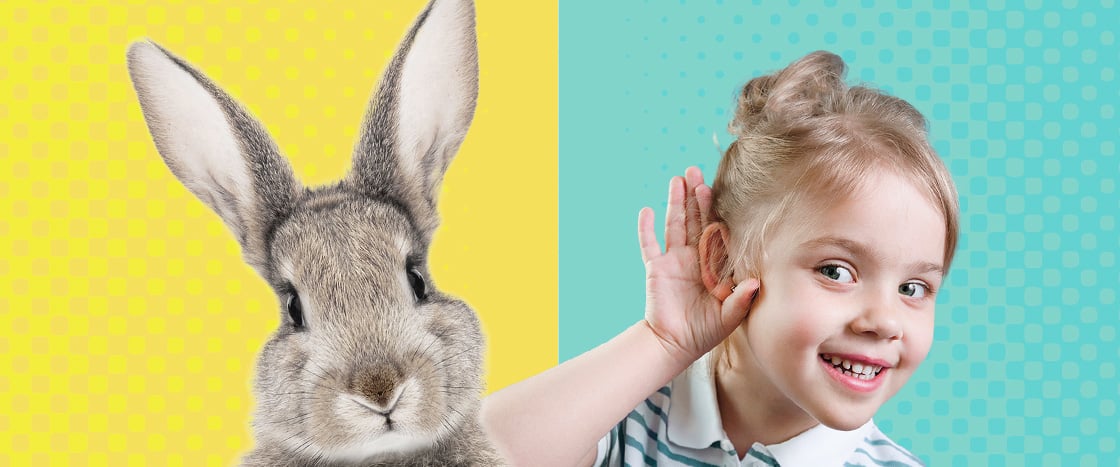Shutterstock.com
Some rabbits have ears that stick up. Some have ears that flop down. But most kinds of rabbits have super-long ears. Rabbit ears are pointy. They are soft and furry too.

Your ears are pretty great. They let you hear. They can even hold up glasses. But are they as amazing as bunny ears?
Learning Objective: Students will describe how human and rabbit ears are alike and different.
Rabbit Ears
Two Long Ears
Shutterstock.com
Some rabbits have ears that stick up. Some have ears that flop down. But most kinds of rabbits have super-long ears. Rabbit ears are pointy. They are soft and furry too.
What They Do
Shutterstock.com
Those big ears can hear very well. Rabbits can hear a predator from almost 2 miles away! What does a rabbit do if it hears a hungry fox? It runs away! Its ears help keep it safe.
Twist and Turn
iStockPhoto/Getty Images (Droopy Ears, Left Rabbit); Shutterstock.com (All Other Images)
Rabbits can move their ears. They can twist and turn them. Rabbits can even move one ear at a time!
Your Ears
Two Bendy Ears
Shutterstock.com
Take a look at your own ears. You need a mirror to do it. They are small and shaped like the letter c. Do they feel soft and fleshy? Your ears can bend!
What They Do
Shutterstock.com
People don’t hear as well as rabbits. But your ears help you out too. You can hear music. You can hear people talk. If you hear a car honk,you stay out of the way. That keeps you safe.
Can They Wiggle?
JGI/Jamie Grill/Tetra images RF/Getty Images
Not many people can wiggle their ears. But some people can do it! Can you?
More About the Article
English Language Arts Focus
Compare and contrast
Science Focus
Animal adaptations
Vocabulary
predator, fleshy
Implementation
Small Group
Pairings and Text Connections
Before-Reading Resources
Suggested Reading Focus
After-Reading Skills Practice
Extension Activity
Skills: Compare and contrast (10 minutes)